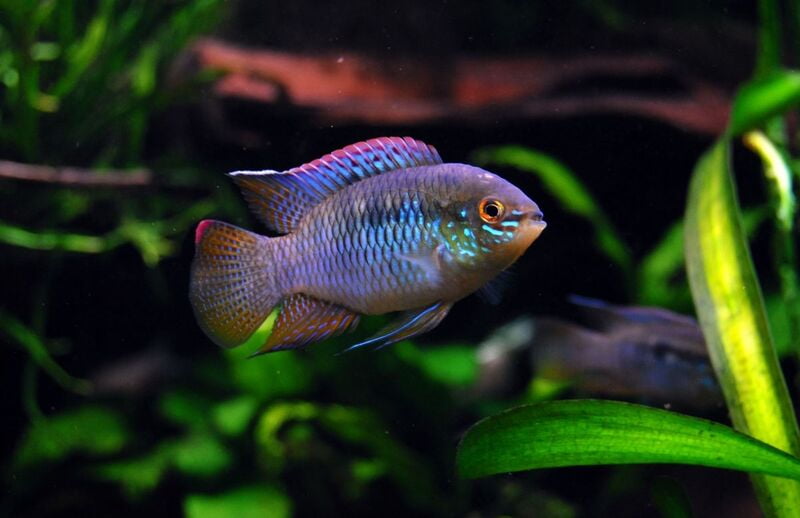
Curviceps
Non-returnable
$20.00
The Smiling Acara (Laetacara curviceps) is a species of cichlid fish native to South America, specifically found in the Amazon River basin. These fish are known for their distinctive appearance and behavior, which is why they are sometimes referred to as "smiling" due to their facial markings.
Here are some key characteristics and information about the Smiling Acara:
Appearance:
- The Smiling Acara has a distinctive pattern on its face that resembles a smile, which is created by dark markings on its cheeks that extend from its eyes to its mouth.
- The body is generally oval-shaped, and the coloration can vary, with shades of brown, orange, and red being common.
Size:
- These fish are relatively small compared to some other cichlid species, typically reaching a size of around 4 to 5 inches (10 to 13 cm) in length.
Habitat:
- They are found in slow-moving or still waters, such as ponds, creeks, and backwaters, within the Amazon River basin in South America.
Behavior:
- Smiling Acaras are generally peaceful cichlids, especially when compared to some of their more aggressive relatives.
- They are known for being good parents, with both the male and female participating in caring for the eggs and fry.
Tank Requirements:
- When kept in captivity, a tank with a minimum size of 30 gallons is recommended.
- They prefer a well-planted tank with hiding spots and gentle water flow.
Feeding:
- Smiling Acaras are omnivores, and their diet should include a variety of foods such as high-quality pellets, live or frozen foods, and occasional vegetable matter.
Compatibility:
- While they are generally peaceful, it's essential to consider the compatibility of tankmates. Avoid keeping them with overly aggressive or territorial species.
Breeding:
- Breeding the Smiling Acara is achievable in captivity. They are substrate spawners and exhibit interesting parental care behaviors.
As with any aquarium fish, it's crucial to research and understand the specific needs and requirements of the Smiling Acara to provide them with a suitable and healthy environment. Regular monitoring of water parameters and maintaining good water quality is essential for their well-being.
Size



